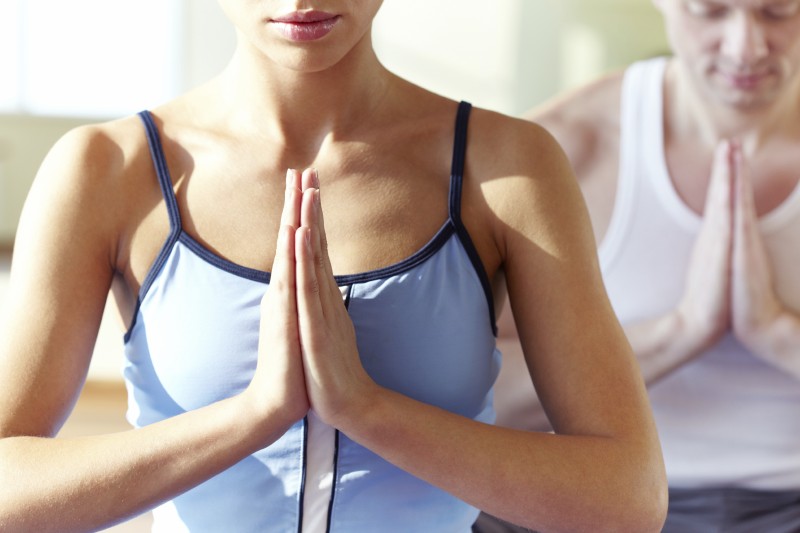
The tax would affect gyms and yoga studios, among other businesses.
Imagine the most in-shape athlete you know. Now picture their workout routine in their sport of choice. Most of us average humans, however athletic we are, do not come close to having the amount of muscle these people exhibit. But simply throwing all energy into one sport may not be the best decision either.
Intense athletes have learned the power and benefits of incorporating proper cross-training into their exercise regimens for a variety of reasons. One of the most important is to work muscles that are ignored in their regular workouts. Another is that by building these muscles and increasing flexibility, an athlete will lessen the likelihood of sustaining injuries. Over the years, yoga has become one of the most popular forms of cross-training because of its ability to reach muscles that are under-worked in most sports and add a level of athleticism that is nigh-impossible to reach through other methods.
“A lot of people who consider themselves in great shape don’t realize they’re actually out of balance,” said yoga expert Rodney Yee in an article on Gaiam Life. “I was a ballet dancer and gymnast. Yoga helped me heal old injuries and prevent new ones. It helps with range of motion in every joint, and keeps the muscles supple but strong. It doesn’t just build a body for a specific activity, but brings us back into balance so our body can adapt to any movement.”
When a runner, snowboarder, surfer, or other athlete acquires an injury, physical therapists often recommend specific yoga poses that can provide beginning stretches, eventually leading to a strengthening of the area that was affected. Rather than learning the positive attributes of practicing yoga by the endorsement of a medical professional, try incorporating a few basic poses into your daily workout routine to help prevent injuries occurring in the first place.
“It pains me to go to the gym and see these guys walking around with all their muscles,” said former professional football player Carter Lord in Gaiam Life. “I know they don’t feel good; they’re not healthy. It doesn’t do you any good to be like a piece of steel if you are in danger of pulling muscles if you move quickly. Every weightlifter or athlete in America should have yoga as part of their regimen. If they did, you can be sure they would have far less injury.”
Gaiam and Healthline, along with other sources on yoga news, provide advice on which poses are best for each type of cross-training athlete. Those who are cyclists or mountain bikers tend to notice the most pressure in their neck, legs, and upper body, which can be solved with a Side-Angle Standing Pose that is meant to open up the chest, hips, and upper back, along with evening your spine’s alignment. Runners who experience pain in their hamstrings, spine, and shoulders should try the Downward-Facing Dog, while swimmers should test out the Sun Salutation Series to open up their shoulders and assist with breathing techniques. These techniques are the building blocks of yoga, and learning the correct way to breathe can not only assist in improving strength during yoga sessions, but give athletes additional skills that transition well into their sport.
“I think when I used to play, I would hold my breath the entire duration of the game–but that’s another thing yoga really helped me with–controlling my breath as I’m playing my sport,” said yoga instructor and professional triathlete Kimberly Fowler in Gaiam Life.
In a blog post on Healthy Women, the effect of yoga on the body is discussed. While other workouts such as running or biking can leave someone drained afterward, with an added sense of exhaustion that comes with age, yoga provides more energy.
“The anti-aging benefits of yoga are amazing. Yoga can reduce inflammation at the joints and muscles, increase heart health by reducing your resting heart rate, strengthen the nervous system, increase muscular proprioception, fight memory degeneration and fill you with energy because the blood becomes more oxygenated,” the post stated. “Many types of regular physical activity offer similar benefits–from regular daily walks to aerobics–but yoga teaches the added bonus of breathing control and mind relaxation.”
It also mentioned the mindset that is taught in yoga as one that is more positive than the demanding competition relevant in other sports. Rather than being overcome with negative thoughts that center around not being able to accomplish something, yoga teaches people to put those thoughts out of their minds.
To get an introduction to yoga, find a beginner class near you or check out a number of online resources, such as Yoga Journal, Mind Body Green, or yogaglo. Another option is to purchase a yoga DVD so you can follow along without having to keep up with a class if you’re just getting started. My personal favorite when I’m not able to make it to a class is to go through a set of yoga cards (mine are specifically from Rodney Yee’s line). This gives you the chance to switch up your routine and go at your own pace, and they’re great to take with you when traveling.
Image copyright iStockPhoto/shironosov
 Your Privacy Choices
Your Privacy Choices
 The
The